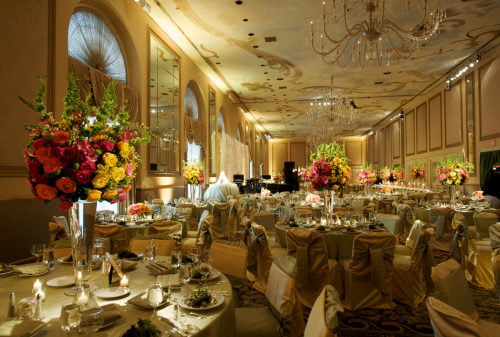What do you associate with the Lord’s Supper? Stained glass windows, little cups, hushed solemn sounds?
I see a beach on the Atlantic coast in France where we celebrated this important Christian rite sitting on the ground, with surf boards as tables, during a youth mission camp. I also see the little old man somewhere in the Andes in Peru, in a tiny church, who knelt before me, and whose calloused hands took my feet and carefully washed them. We did not speak the same language, but we understood each other.
The Lord’s Supper also reminds me of the thousands who throughout the centuries were killed, because neither Catholics nor Protestants (or even Protestants among themselves) could agree on its meaning and precise theological ramifications.
Together with baptism, the celebration of the Lord’s Supper is an extremely important ritual in the Christian church, explicitly instituted by our Lord Jesus Himself (Matt. 26:26-28; John 13:13-17). Like any ritual, it speaks to those participating in it, reinforcing some of the most fundamental concepts of our Christian walk, namely: (a) that salvation does not come from within, but, rather, is a gift made possible only through the sacrifice of our Savior Jesus Christ; (b) that service and humility are not just theological concepts, but are, rather, elements to be put into practice; and (c) united we stand, divided we fall.
Powerful Symbol
The Lord’s Supper actually has its roots in the Old Testament, and is another good example of the unbreakable unity between God’s revelation in both Testaments in regard to the plan of salvation.
Let’s go back to the first Lord’s Supper. It’s Passover time in Jerusalem, and Jesus and His disciples are getting ready to celebrate this important yearly ritual that reminded them of God’s saving grace in the face of the overpowering might of the enemy (see Matt. 26:17-30 and parallel texts). A room is secured, and the traditional Pascal lamb, unleavened bread, bitter herbs, and different cups are prepared. Jesus kneels before His bickering disciples and washes their dirty feet (John 13:1-6), a job normally done by slaves. The roasted Passover lamb is passed around; then the unleavened bread and bitter herbs.
Suddenly Jesus speaks up: “Take, eat; this is My body” (Matt. 26:26). He also takes the cup1 and tells them to “drink, … for this is My blood of the new covenant, which is shed for many for the remission of sins” (Matt. 26:27, 28). Both the bread and the cup represent the common daily fare of the ordinary peasant living in Palestine. But Jesus uses these common elements and gives them new meaning.
Paul writes about this in his first epistle to the Corinthian church, a church with a mixed ethnic makeup, reminding us that eating and drinking together does not only create community but helps us remember the incredible sacrifice of the Son of God (1 Cor. 11:26). By looking back, by “remembering” Christ’s death on the cross, we look away from ourselves and focus on the most incredible, audacious, and transforming news imaginable. The news of a God who does not sit isolated in His corporate headquarters, so to speak, far removed from the reality of sin and pain, but who is prepared to humble Himself and die for an ungrateful creation.
The Lord’s Supper not only reminds us of Jesus’ death but gives a loud and public proclamation of Jesus’ victory over sin, and looks forward to that glorious day of His second coming (1 Cor. 11:26).
This looking forward is an important part of Christian theology and lifestyle. It reminds us that life is not just 50 or 60 or 80 years, with the grave awaiting us at the end, but that there is hope beyond the grave. We will be united with loved ones and with our risen Savior on that great day, when He will “wipe away every tear” (Rev. 7:17; 21:4; cf. Isa. 25:8).
A Factor Often Misunderstood
The book of Revelation describes this reunion in terms of a great wedding feast (Rev. 19:7-9), which, again, is a reminder of the Lord’s Supper (and the earlier Passover meal). In fact, eating and drinking imagery is used often in the book of Revelation, and is connected to final victory and celebrations (Rev. 2:7; 3:20; 7:16; 12:6, 14; 19:9; 21:6; and 22:17). The imagery also introduces the idea of final judgment (Rev. 6:8; 14:10; 16:6; 17:16; 19:17, 18, 24; and 20:9).2
This particular aspect of judgment and eating and drinking is also present in the Lord’s Supper. Paul reminds the church at Corinth that an individual who participates in the Lord’s Supper in an “unworthy manner” “eats and drinks judgment to himself” (1 Cor. 11:29) and is “guilty of the body and the blood of the Lord” (1 Cor. 11:27). In other words, when you and I participate in the Lord’s Supper without having repented of hurtful thoughts, wrong deeds, and selfish motives, we turn down an incredible opportunity. We keep on carrying these sins with us, instead of “uploading” them to our heavenly Sin-bearer and having them wiped away from our record.
These sentiments from Paul may be the reason that some of us do not participate in the Lord’s Supper. Perhaps we feel unworthy—feel that our messed-up lives cannot be put into balance again. Perhaps we cannot forgive what has been done to us. Actually, these are not the things that make us unworthy. The only time we partake of the Supper in an unworthy manner is when we no longer hear the voice of the Holy Spirit—the Spirit who lovingly speaks to us, who unmistakably convicts us, and who wants to transform us.
Those who participated in that first Supper were not flawless or perfect. Indeed, all the participants that night denounced their faith, betrayed their Master, or just simply ran away. But through the Lord’s Supper God has provided us with a wonderful way of physically rejoining the fellowship of the believers. By washing one another’s feet, by eating and drinking the emblems of the death of Jesus Christ, by joining in the joyful song of victory and salvation that follows each Communion service, we become part of the (invisible) body of Christ—the bride getting ready to meet her Bridegroom.
New Memories, New Songs
I still remember all these wonderful Communion services—sometimes held in strange places, often bringing me together with people I did not know before, but always drawing me closer to my Savior. Every time I participate in the Supper, forgiveness becomes a reality, new memories of victories are added, new songs are written, and lives are changed.
I love to come to the table. Don’t you?
1 The three Gospels that recount the story of the Last Supper all include the term “cup” (Matt. 26:27; Mark 14:23; Luke 22:17; also 1 Cor. 11:25-27), which does not actually specify what kind of drink was in the cup. The indication of the cup’s contents comes only in Jesus’ (later) statement that He would not partake “of this fruit of the vine” until the final eschatological banquet (Matt. 26:29). For a more in-depth discussion, see Gerald A. Klingbeil, Bridging the Gap: Ritual and Ritual Texts in the Bible (Bulletin for Biblical Research Supplements 1; Winona Lake, Indiana: Eisenbrauns, 2007), pp. 178-181.
2 For more details, see Gerald A. Klingbeil, “‘Eating’ and ‘Drinking’ in the Book of Revelation: A Study of New Testament Thought and Theology,” Journal of the Adventist Theological Society 16.1-2 (2005): pp. 75–92.
This article originally appeared in Adventist World in December, 2007.
Gerald A. Klingbeil is dean of the School of Theology at the Adventist International Institute of Advanced Studies in the Philippines.

